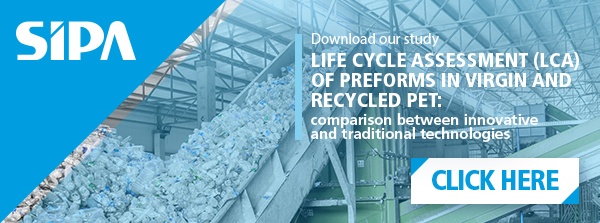
The regeneration of a packaging plant is an aspect that deserves due attention to ensure the efficiency, quality and sustainability of a company's production systems.
This is a crucial step in order to make improvements, overhauls, or replacements of key components in order to restore their optimal performance.
There are, of course, certain conditions that lead to the evaluation of the regeneration of the system, which it is good to analyze.
Technological obsolescence of machines
One of the main reasons why a packaging plant may require retrofitting is technological obsolescence. In an ever-changing industrial world, new technologies and innovative processes are constantly emerging, bringing new opportunities to increase production.
If a plant uses outdated technologies, it may be less efficient, expensive to maintain, and poorly able to adapt to market needs. Retrofitting can involve upgrading equipment and implementing cutting-edge technology to allow the company to remain competitive in the market.
READ ALSO: "ISSUES CONCERNING THE RELOCATION OF A PLANT AND THE SUBSEQUENT RETROFIT"
Overall Performance Improvements
Another reason to proceed with retrofit is to improve the overall performance of the plant. A transition that can be dictated by a growing demand for products, an increase in customer expectations or the need to review overall production with a view to greater efficiency.
Regeneration can involve optimizing processes, reducing cycle times, or increasing production capacity to meet planned business goals.
READ ALSO: "RETROFIT AND RELOCATION OF A PLANT: THE ADVANTAGES THAT SIPA CAN OFFER"
Raising product quality

In the packaging industry, product quality is essential. If the plant is unable to maintain the standards required for the quality and integrity of packaged products, but also to meet the need for innovative shapes (marketing side) and package weight (sustainability side and containment of costs related to raw materials), the time has come to consider a retrofitting process.
This could involve upgrading quality control systems, renewing production lines, or implementing new packaging technologies to ensure products meet the desired new standards.
Reduced operating costs
An inefficient packaging plant can result in high operating costs. Ongoing maintenance and frequent breakdowns can be time-consuming and resource-intensive, starting with the number of incidents and the length of downtime.
Retrofitting aims to reduce these costs by improving the reliability and efficiency of the plant. This can involve replacing obsolete components, individual machines, optimizing new processes, and adopting practices that are more sustainable in various respects
Regulatory compliance and sustainability of the plant
The evolution of environmental and safety regulations are elements that, especially after the issuance of the new Machinery Regulation at EU level, may require the regeneration of a plant.
To comply with regulations that have just come into force and those that will soon come into force, it may be necessary to make significant changes to the plant, such as installing energy-saving devices, managing waste in a more sustainable way, or adopting processes that have less impact on the environment. This is why regenerating the plant is more of an obligation than a means to achieve new goals.
It should also not be forgotten that sustainability has become a crucial aspect in the packaging industry. Retrofitting can involve the implementation of sustainable practices and technologies to reduce the environmental impact of the plant, as well as the use of innovative materials, contributing to better resource management and reduced greenhouse gas emissions.
READ ALSO: "OLD AND NEW MACHINERY REGULATIONS: FOCUS ON MAINTENANCE AND MODIFICATIONS TO MACHINERY AND LINES"
Conclusions
To recap the highlights of this analysis, the retrofitting of a packaging plant becomes necessary when technology is rendered obsolete, performance improvements are sought, product quality is to be ensured, operating costs are to be reduced, regulations are complied with, or sustainability is promoted.
This is an investment for the company, but the overall result that can be achieved is to ensure that the plant is competitive, efficient and up to market expectations.






